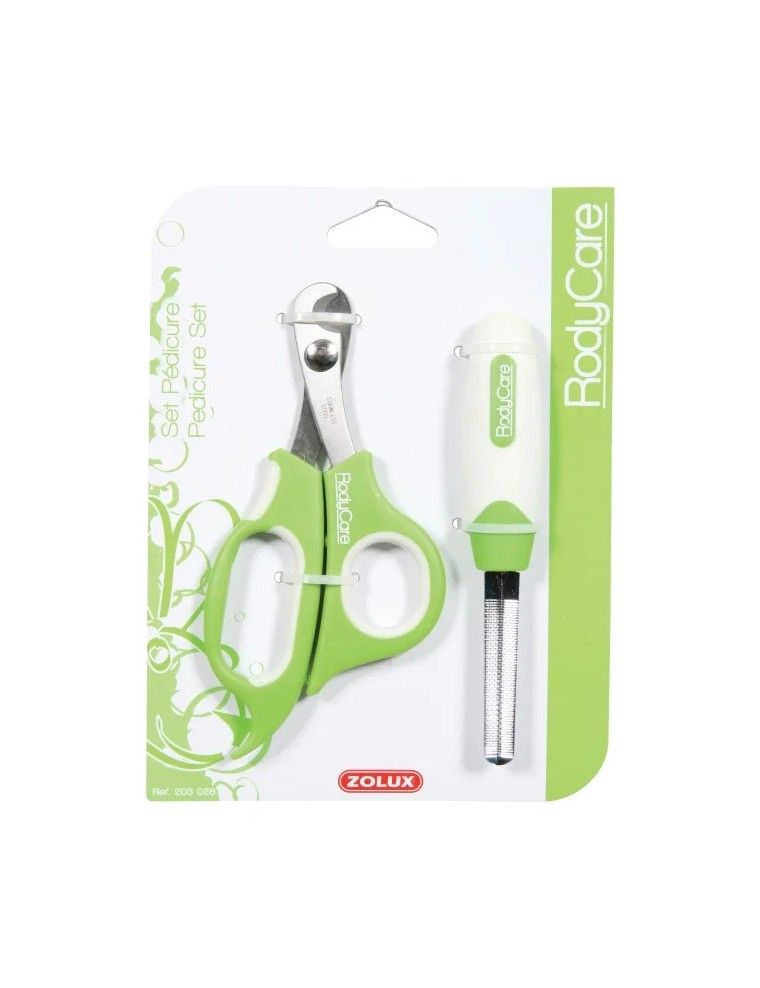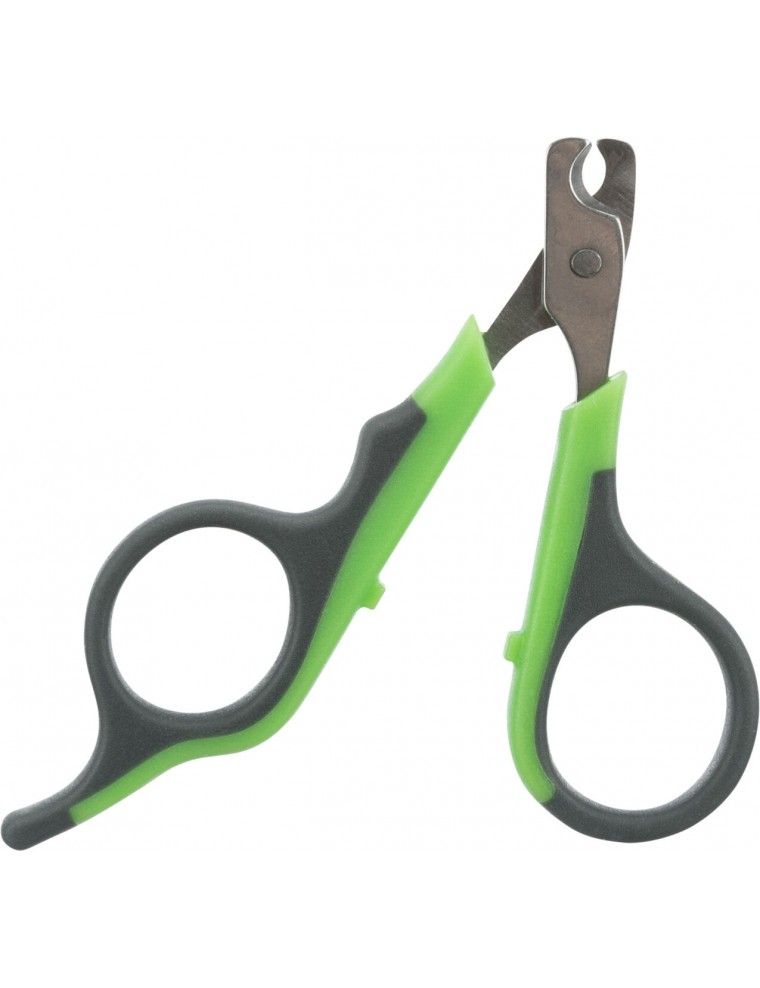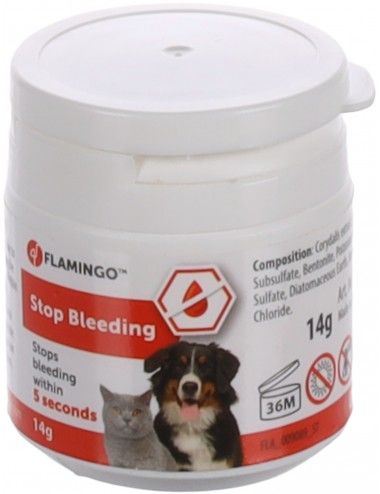- 3 in stock
Claws Ferret
Nail Clippers for Ferrets: Comfort and Safety Above All
Discover the range of ferret nail clippers at Le Petit Rongeur, designed to ensure the well-being of your faithful companion. Trixie and Zolux offer you specific high-quality tools to take care of your ferret's claws. Nail trimming is essential to ensure the comfort and safety of your pet.
Why Cut Your Ferret's Claws?
In the wild, ferrets wear their claws naturally by digging in the ground. However, at home, floors are often less abrasive, which can lead to excessive claw growth. Claws that are too long can cause injury to your ferret and damage your furniture. Regular trimming of the claws is therefore essential to avoid these inconveniences.
How often to cut your ferret's claws?
There is no hard and fast rule, as the frequency depends on the environment and your ferret's activity. It is recommended to monitor your pet's nails regularly and trim them when they become too long. In general, claws on the front legs wear out less quickly than those on the back legs, so they may need to be trimmed more frequently.
Choose the Right Tool
Before you begin, make sure you have nail clippers specifically designed for ferrets. These tools are affordable and universal, meaning they can also be used for other animals, such as cats or rabbits. Avoid using human nail clippers, as their improper shape can cause discomfort to your ferret by twisting or crushing the claw.
Tips for Successful Nail Trimming
The key to successful nail trimming is gentleness and calmness. Here are some tips:
- Choose a quiet, well-lit area for nail trimming.
- If your ferret does it spontaneously, that's perfect. Otherwise, you can try to distract him with appetizing food.
- To trim claws, sit comfortably, place your ferret on his back on your lap and gently spread some food on his stomach. Your ferret will be busy cleaning itself and will not pay attention to the trimming.
- If your ferret is less cooperative, you can use the restraint technique by gently lifting your ferret by the scruff of the neck. This will immobilize your ferret and make nail trimming easier.
Tips for Precise Cutting
Ferret claws are small and non-retractable, with a pinkish part in the center made up of blood vessels. The goal is to cut about 1 millimeter below this pink part to prevent any bleeding. If you are unsure, ask your veterinarian to show you the technique.
If one of the claws accidentally bleeds, don't panic. This is usually a minor incident, and your ferret will quickly forget about it. Disinfect the claw and place your pet in a clean place for a few minutes, waiting for the bleeding to stop naturally.
Claws
Nail Clippers for Ferrets: Comfort and Safety Above All
Discover the range of ferret nail clippers at Le Petit Rongeur, designed to ensure the well-being of your faithful companion. Trixie and Zolux offer you specific high-quality tools to take care of your ferret's claws. Nail trimming is essential to ensure the comfort and safety of your pet.
Why Cut Your Ferret's Claws?
In the wild, ferrets wear their claws naturally by digging in the ground. However, at home, floors are often less abrasive, which can lead to excessive claw growth. Claws that are too long can cause injury to your ferret and damage your furniture. Regular trimming of the claws is therefore essential to avoid these inconveniences.
How often to cut your ferret's claws?
There is no hard and fast rule, as the frequency depends on the environment and your ferret's activity. It is recommended to monitor your pet's nails regularly and trim them when they become too long. In general, claws on the front legs wear out less quickly than those on the back legs, so they may need to be trimmed more frequently.
Choose the Right Tool
Before you begin, make sure you have nail clippers specifically designed for ferrets. These tools are affordable and universal, meaning they can also be used for other animals, such as cats or rabbits. Avoid using human nail clippers, as their improper shape can cause discomfort to your ferret by twisting or crushing the claw.
Tips for Successful Nail Trimming
The key to successful nail trimming is gentleness and calmness. Here are some tips:
- Choose a quiet, well-lit area for nail trimming.
- If your ferret does it spontaneously, that's perfect. Otherwise, you can try to distract him with appetizing food.
- To trim claws, sit comfortably, place your ferret on his back on your lap and gently spread some food on his stomach. Your ferret will be busy cleaning itself and will not pay attention to the trimming.
- If your ferret is less cooperative, you can use the restraint technique by gently lifting your ferret by the scruff of the neck. This will immobilize your ferret and make nail trimming easier.
Tips for Precise Cutting
Ferret claws are small and non-retractable, with a pinkish part in the center made up of blood vessels. The goal is to cut about 1 millimeter below this pink part to prevent any bleeding. If you are unsure, ask your veterinarian to show you the technique.
If one of the claws accidentally bleeds, don't panic. This is usually a minor incident, and your ferret will quickly forget about it. Disinfect the claw and place your pet in a clean place for a few minutes, waiting for the bleeding to stop naturally.
- 5 in stock
- in replenishment
Questions / Réponses
Les griffes des furets doivent être coupées toutes les 2 à 3 semaines pour éviter qu'elles ne deviennent trop longues, ce qui peut gêner leur marche et augmenter le risque de blessures.
Utilisez un coupe-griffes spécialement conçu pour les petits animaux comme les furets. Ces instruments permettent une coupe précise et sécuritaire, en évitant de blesser l'animal.
Si les griffes de votre furet courbent et touchent le sol lorsqu'il marche, ou s'il commence à s'accrocher fréquemment aux tissus et aux carpettes, il est temps de les couper.
Si vous coupez accidentellement la partie vivante de la griffe, appliquez immédiatement un peu de poudre hémostatique ou de farine pour arrêter le saignement. Restez calme et rassurez votre furet pendant le processus.
Oui, avec la bonne technique et les outils appropriés, vous pouvez couper les griffes de votre furet vous-même. Il peut être utile de demander une démonstration à votre vétérinaire lors de la première fois.
Essayez de créer un environnement calme et confortable. Certains furets sont plus coopératifs après une période de jeu ou de repas, car ils sont plus détendus. Utiliser des friandises pendant ou après la coupe peut également aider.
En général, la coupe régulière est suffisante. Cependant, vérifiez régulièrement l'état des pattes pour détecter tout signe d'infection ou de blessure, et consultez un vétérinaire si vous avez des préoccupations.
Si votre furet est réticent à se laisser manipuler les pattes, travaillez progressivement à augmenter sa tolérance. Commencez par toucher doucement ses pattes sans couper les griffes, en le récompensant pour son calme. Augmentez lentement la durée et l'intensité de la manipulation.
Bien que la coupe soit nécessaire, fournir à votre furet des surfaces rugueuses sur lesquelles il peut grimper et jouer aidera à user naturellement ses griffes. Cependant, cela ne remplace pas la nécessité d'une coupe régulière.
Les signes d'infection ou de blessure incluent le rougeur, le gonflement, une sensibilité au toucher, ou un écoulement autour de la griffe. Si vous observez l'un de ces signes, consultez un vétérinaire pour un traitement approprié.


